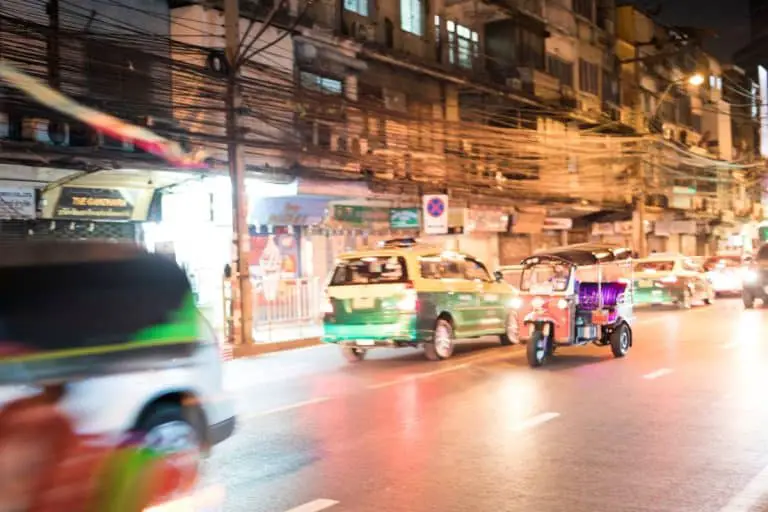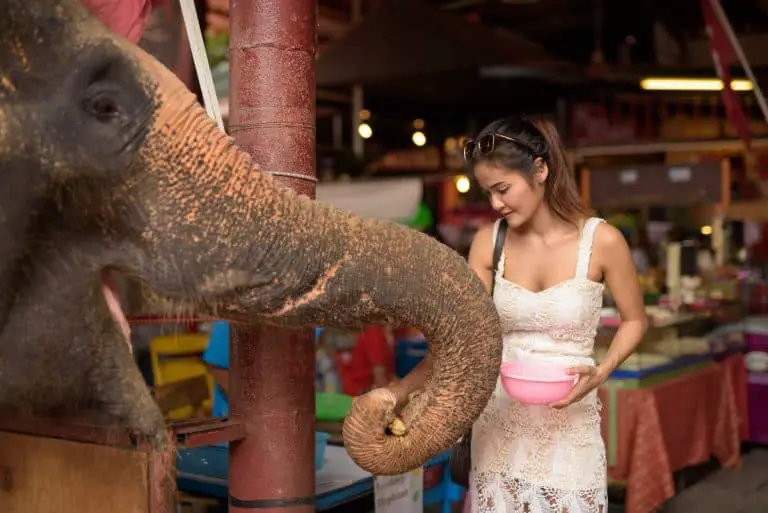What Are The Thailand Regional Differences?
As I sip my morning coffee on my balcony here in Chiang Mai, it strikes me how drastically Northern Thailand differs from the frenzied energy of Bangkok down in the Central Plains region. In my year living here, I’ve discovered first-hand how Thailand’s geography, ethnicities, and cultures vary widely between regions. Whether you’re a tourist seeking to experience authentic local flavors or an expat determining where to put roots, understanding Thailand’s regional differences is key.
Key Takeaways
- Thailand has 4 main geographical regions, each with distinct cultures, ethnicities, landscapes, and cuisines
- Central Thailand is known for fertile lands, mild flavors, Chinese influences, and attractions like Bangkok and floating markets
- Northern Thailand has a cooler climate, more herbs and vegetables, and spicier dishes like khao soy noodles
Exploring the Diversity Across Thailand’s 4 Unique Regions
After 35 years of living in California, the diversity across Thailand tempted my wandering spirit. From jungle treks to golden temples to beach resorts, there’s adventure around every corner. Let’s explore what makes each region unique!
Fertile Central Thailand: Mild Flavors Meet Big City Life
Most visitors land first in central Thailand and the hectic capital, Bangkok. As the political and economic center dominated by ethnic Thai people, expect energy reminiscent of New York City immersed in Southeast Asian culture—tinged by Chinese influences after centuries of trade and immigration across the porous northern border.
- Skytrains snake between glittering temples and towering high-rises in this contradiction between ancient and hypermodern.
- Hidden gem floating markets overflow with tropical fruits and spices mingling with motorcycle exhaust along the Chao Phraya River as boats drift below imperial palaces.
The flat fertile plains built by the mighty Chao Phraya and other major rivers enabled rice and crop cultivation that shaped milder central cuisine with Chinese flavors absorbed over generations.
- Pad Thai noodles, chicken coconut soup, and shrimp spring rolls balance sweet, sour, salty, and spicy flavors nicely for novice Thai foodies.
- Beyond Bangkok, jasmine rice blankets the central region southward through provinces like Ayutthaya and Nakhon Si Thammarat holding archaeological sites signaling the rise and fall of ancient Siamese kingdoms.
With cooler dry seasons from November through February, these months draw flocks of tourists who then flee the sweaty heat and humidity the rest of the year.
Northern Thailand: Mountain Jungles, Misty Treks & Complex Flavors
Venturing north from the central plains, the jungle closes in as rugged mountains shape the landscape and culture in provinces like Chiang Mai and Chiang Rai. With fertile valleys carved between these peaks, various ethnic minority groups settled in this frontier isolated from Bangkok’s direct governance until the 20th century.
In Chiang Mai, the old city still standing within medieval walls holds over 300 Buddhist temples marking the city’s history as a spiritual center of the Lanna Kingdom in the north. Winding alleyways are filled with monks in orange robes collecting alms from locals at dawn before trekkers hit the Hundreds of hill tribe villages that dot the mountain slopes, home to groups like the Hmong, Lisu, and Karen.
- Through local ethical elephant conservation programs, you can visit native wildlife while supporting their humane treatment. The elephants and their mahout handlers will amaze you with their deep bonds.
- The cooler mountain air also enables the growing of an abundance of herbs, vegetables, and exotic fruits that shape complex northern cuisine.
Signature northern dishes reflect the diversity of flavors and ingredients:
- Spicy meat salads called laab
- Herbaceous curries like kaeng hang lay pork belly
- Burmese-influenced khao soi curry noodle soup
- Fermented pork sausage naem and nam phrik oong chili paste
The cooler “winter” months between October and February are best for trekking the mountains and exploring rural villages. Just bring a light jacket!
Hot & Spicy Isaan Cuisine in Northeast Thailand
If you crave spicy food, head just north of Cambodia to Thailand’s northeastern plateau, Known as Isaan. Sparsely populated and fairly isolated until recently, the region bred hard-working rice farmers and a culture bearing traces of Khmer roots.
- Folk music and dance still thriving plus temples like Phanom Rung reflect Cambodian aesthetic influences. This arid, inland climate relies on the Mekong River flowing along the border.
- Hardscrabble red soil and droughts often yielded bare harvests, shaping extremely spicy cuisine perfect with beer. Buffalo and chicken stir-fries, grilled fish, and papaya salads pack chili heat far hotter than elsewhere in Thailand!
Sticky rice is the staple, rolled into balls and dipped into hearty stewed curries, meat salads, and chili pastes like nam phrik num or nam phrik ong made smoky with roasted tomatoes and onions.
- Chunks of chicken or sausage with heaping mounds of sticky rice – Isaan comfort food at its best!
- Adventurous eaters can also find dishes made with ant eggs or crispy fried insects too.
Surrounded by Laos and Cambodia with Vietnamese infusion in the southeast, Isaan provides rich cultural exposure. Temple pyramids, silk weaving villages and boat tours along portions of the Mekong are top highlights.
November through February bring slightly cooler weather but visiting during April’s Songkran water festival means getting soaked with a grin!
Southern Thailand: Tropical Paradise & Fiery Hot Cuisine
Finally, narrow peninsulas extending down the Andaman Sea and the Gulf of Thailand shape both landscape and culture in Thailand’s southern region. With a tropical monsoon climate, humidity stays high year-round while April storms yield the most rain.
Lush rainforests and limestone cliffs coat the hundreds of islands in provinces like Phuket, Krabi, and Ko Samui. At the same time, urban hot spots like Hat Yai and Songkhla show Malay-Muslim influences in language, architecture, and fiery cuisine.
- Like Isaan, southern dishes explode with heat. Flame red curries simmered in creamy coconut milk and herbal salads ladled with spicy lime dressings will make you gulp iced tea by the pitcher!
- Pineapples, cashew nuts, and pungent seafood caught fresh daily shape this regional cuisine as well.
- The famous pad thai noodle dish originated here before spreading nationwide.
Southern culture blends Buddhist and Muslim traditions. Chinese shrines and ornate mosques stand side by side. Brightly painted “long tail” wooden boats ply the harbor alongside luxury yachts with tourists tanning on deck.
- By night, open-air markets with festivals and musicians keep the party going late. Full moon parties on Ko Pha Ngan and other islands guarantee all-night revelry!
With balmy weather nearly year-round, thorns amidst the roses are risks of typhoons and heavy storms, especially between May and November.

Thailand’s Regional Smörgåsbord: A Feast for All
One plate of pad thai can’t sum up the flavors from Chiang Mai to Phuket. As you explore this amazing country, open wide to the diversity across each region. Wander elegant temples in Bangkok then trek jungles in the north before unwinding on silky sand beaches.
And wherever your destination is, let your tastebuds fall in love with the amazing regional cuisines. That sublime balance of spicy, sweet, and savory flavors will keep calling you back for more!
I’m here to help you gain your balance while navigating all that Thailand has to offer. What questions might you have? Get in touch anytime to start your journey!
FAQs
What is the weather like in different regions of Thailand?
Central and Northern Thailand have cooler, drier seasons from November-February while the south and northeast regions stay hot and humid year-round. The northeast has a very hot, arid climate while the south is tropical.
What should I eat in Chiang Mai versus Phuket?
Expect lots of spicy meat salads, herby curries, and noodle soups in northern cuisine. Dishes in the southern region use very hot chilies and more seafood with coconut milk-based curries.
When is the best time of year to visit Bangkok?
Bangkok’s cooler dry season from November to February draws the most visitors. March through October brings very hot, humid weather with chances of rain.
What islands in southern Thailand are good for parties?
The Gulf island of Ko Pha Ngan is famous for its lively full-moon beach parties. Neighboring islands like Ko Samui and Ko Tao also have vibrant nightlife scenes.
What Thai dish has Chinese origins?
Pad thai noodles came from Chinese influence in Thailand. The sweet-sour-savory stir-fried noodle dish uses typical Chinese ingredients like tofu, preserved radish, eggs, and chopped peanuts.
What is the historical and cultural significance of the northern region of Thailand?
The northern region of Thailand, home to ancient kingdoms like Sukhothai, has a rich historical and cultural heritage and is known for its diverse ethnic groups such as the Tai people.
What governmental agencies are responsible for the different regions of Thailand?
The Office of the National Economic and Social Development Board oversees the development and planning of the various regions of Thailand to ensure balanced growth and progress.
Conclusion
As an expat living in Thailand for over 15 years, I’ve made it my mission to guide others seeking fulfilling lives abroad. Having lived in the fast pace of Bangkok and now the misty mountains of Chiang Mai, I can offer first-hand insights about this amazingly diverse country.
Schedule a discovery call to map out your ideal Thai journey, whether that means island retirement, launching a business, or finding your path. I offer personalized coaching and connections to help you gain your balance in this wondrous, wild country no matter where your interests lie.
Let’s chat!





